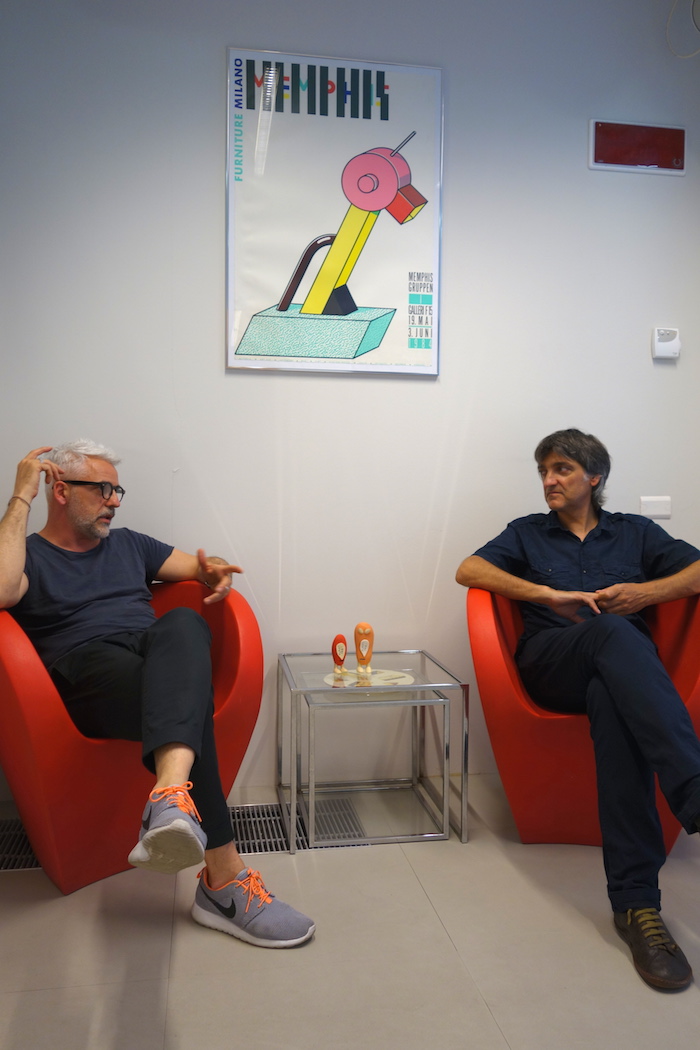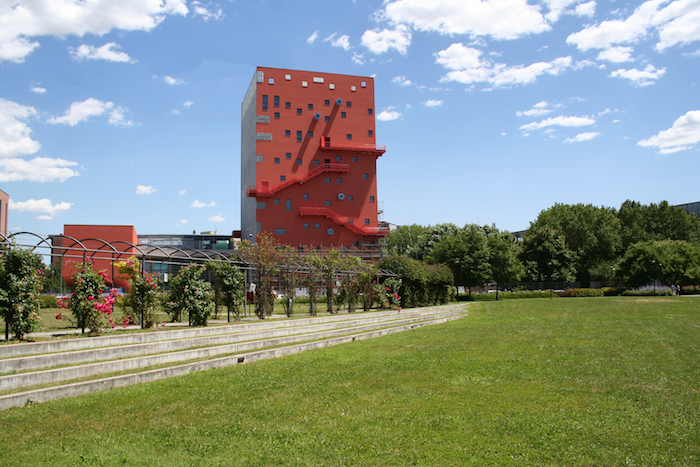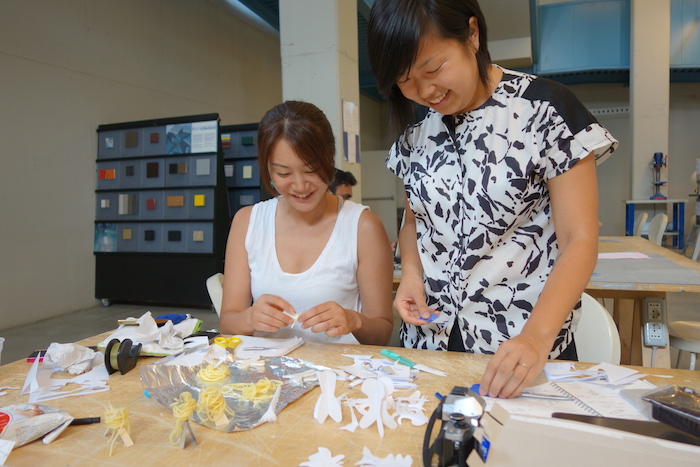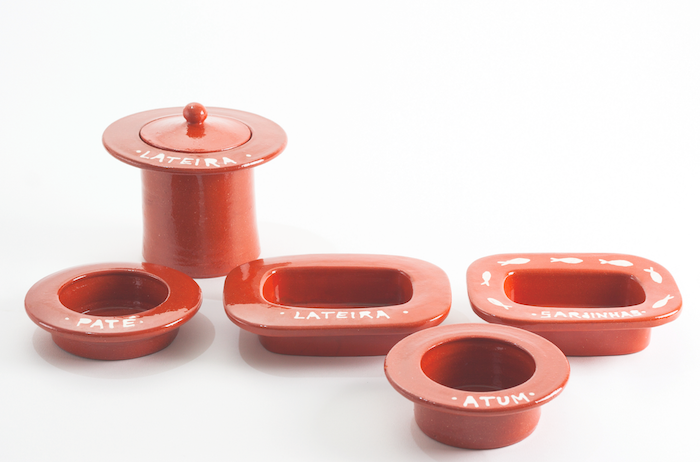Massimo Pitis: When you were a child, did your parents ever say to you, “Don’t play with your food?”
Martí Guixé: No! There were some rules, like not eating in bed, but not really one about not playing with food. But I should say that my parents didn’t cook all that much. I didn't have a big family, I was an only child and my parents worked a lot, so we didn't often have home cooked food often. My mother still says: “I never learned how to cook.”

Massimo Pitis and Martì Guixè in conversation
MP: What does "food design" mean?
MG: That’s a big question. I came to food from the perspective of a designer. In the mid 1990s I was into mass production, just like many other designers of that period. I realized that food was something that was mass-produced, but nobody was looking at it as an object. I thought about perceiving food as an object and designing it as you would a chair or a lamp. If I take an edible object and reflect upon usability, ergonomics, functionality, I'll end up with a well-designed edible object. And this is, in my opinion, the right approach to food design. If I design a plastic chair, I don’t think about the way the plastic is injected or which kind of plastic is used: that's an engineer's job. When I do food design, I need a chef or a food engineer to take care of the food technology.
MP: I once stayed at the Casa Camper hotel in Barcelona, and visited their FoodBall fast food restaurant, which you designed. At first I thought the idea was a revised version of arancini, and wondered why no one in Italy had ever thought of that! Now, ten years after that project, I find you here, teaching Food Design. Tell me something about the process that brought you here from FoodBall.
MG: Well, maybe I am wrong but arancini are fried, right? Big difference! The idea for foodballs is more like Japanese nigiri. It came from the idea of working with hotels and creating a wholesome, ethical fast food, by serving healthy items such as vegetables and rice. That experience was pretty good, but it was too far removed from the spirit of those times, so it was mostly not understood.
MP: Teams and processes, as opposed to individual creativity, are something else I want to ask you about. Industrialization revolutionized the very idea of design. Before, the product had to do with craftsmanship; then it was brought into an industrial scale. Food produced for mass markets was no exception. Will something similar happen for quality food?
MG: From an industrial point of view, the twentieth century started in the 1920s, which means the twenty-first will really start in 2025. What we must do in these next few years is research. What we become by 2025 will have nothing in common with what we are doing now. The challenge is to stop thinking about mass production, and switch to a multi-production system with small industries. This is the “making” generation. People do small production locally; industrial-scale production isn't going anywhere, not the way it's working now; they must adapt to a new situation. I don’t see a mere change—I see the end of gastronomy as a form of nutrition. I think that gastronomy and the work of the chefs will be an experience, but one unrelated to nutrition. Food design will provide the tools to create new nutrition systems on a small scale. That is going to be possible through a change in industrial perspective.

The building hosting the SPD and IULM University
MP: You are echoing Chris Anderson's ideas on this …
MG: Reading Chris Anderson, I was a bit disappointed about how the media coverage focuses on the 3D printer revolution. I find it more interesting when he talks about small-scale production. In food production, that will allow us to cut the distances required to obtain the ingredients. We can also have a scenario where genetically modified food could co-exist with [unaltered] food: the small scale and the big scale together. But it’s also true that big industry doesn't really deal with quality food: it always undemocratizes the meaning of food, by producing very cheap foodstuffs.
MP: Let’s talk about this program: how did it come out? From an idea, a discussion … ?
MG: Antonello Fusetti [the Scuola Politecnica di Design's owner and director] and I had already been talking about it three or four years ago; but this year Expo 2015 catalyzed everything. It just seemed to be the right time.
MP: The Master’s in Food Design involves a design school, a media and marketing-communications school, organizations such as Slow Food, large corporations such as PepsiCo and Bahlsen, designers, and a famous chef. How do you organize all this, in terms of who determines the agenda?

Students attending a workshop at the Masters course in food design
MG: Antonello put all these people together. I started designing edible objects when they were something completely new: I had to put them in context. The context was packaging, or the design of new tools. At the same time, this context needed to be ritualized; that involves a lot of areas and actors. The way of thinking about hospitality is different in every project. What interests me is not just designing objects, but dealing with people and context. The most fascinating thing is designing something that will be used by chefs, doctors, people doing packaging or graphics, people who work in hospitality, interior designers. Food design has this complexity: you have to work with a big team. That's different from a chef, who does something immediately. What makes this program interesting is the fact that it’s open to different industries: tourism, architecture, marketing, management.
MP: What kind of students do you look for? MG: From my point of view, the best students are willing to acquire knowledge in a completely new discipline. At least in academic terms, it's a discipline that is only beginning to be taught. So I hope my students will be forward-looking. We want to innovate, change the world for the better.
Antonello Fusetti: The aim is to have a global approach to all aspects of design. The idea behind this Master's was to do something that would foster innovation, which comes from a mix of management and marketing, design and technology.
MG: There is a lot of complexity to deal with: ethics, politics, sociology, pollution, and environmental impact. In food, all of this is relevant, because we consume much more of it than we need. When I talk about innovation, I think about how design is applied to objects. A designer does not innovate the technology of plastics: he thinks more about how a product is put on the market. It isn't a technical innovation, but rather an innovation in the perception—or ritualization—of food.
MP: What kind of career landscape awaits your students? How do you imagine the workplace of the future?
MG: Food is the ultimate object that will be created in the next twenty-five years. During this period designers will become ex-designers.
AF: PepsiCo created different design centers around the US. [Mauro] Porcini is now the Chief Design Officer in New York, leading hundreds of people.
MG: The thing is, working with small-scale production means you won't only have big companies with hundreds of designers, but more likely hundreds of companies with ten or fewer designers.
MP: Earlier on today, talking about the future, you said “I have it very clear in my mind.” The future seems very obvious to you. And indeed, you have often been proven right. Like many other visionary people, you see things that others don’t see.
MG: Food is becoming so important because we're all doing everything through the Internet: socializing, talking through screens. So food is the only real thing left. It has this double ergonomics, you have to use it and you have to eat it. And the idea that it affects your body is why I think it is a super object to design.

Hafsteinn Júlíusson, Rui Pereira | THE WHEEL OF NUTRITION, design by Hafsteinn Júlíusson and Rui Pereira, dinner plates, production HAF, 2011. Are you eating right? A dining plate reminds us of the fundamental values of nutrition. It comes in three versions: Diet, Extra ordinary and Supersize for different healthy eating plans.

Kostantia Manthou | KIRA and the edible tower of containers is a collection of kitchen utensils for the production, transportation and consumption of meals. With these containers it is even possible to prepare a new container, an edible container.

David Raffoul, Nicolas Moussalem (David/Nicolas) | After their studies at SPD, the alumni found David/Nicolas, conceiving, among other projects, GOLD DIGGER, a culinary experience for the exhibition “Design meets food” by MariaGroup. An encounter between edible gold and sweets and biscuits as a symbol for the ephemerality of luxury.

Rui Pereira | LATEIRA design by Rui Pereira, decorated clayware, production SHOW ME, 2011. An homage to the nearly extinct canned fish industry via another traditional Portuguese han-dicraft: decorated pottery. The sardine can is transfor-med into a proud, ready for serving delicacy: a manifesto of the craftsman/designer dichotomy.
Special thanks to Giuliano Tedesco
